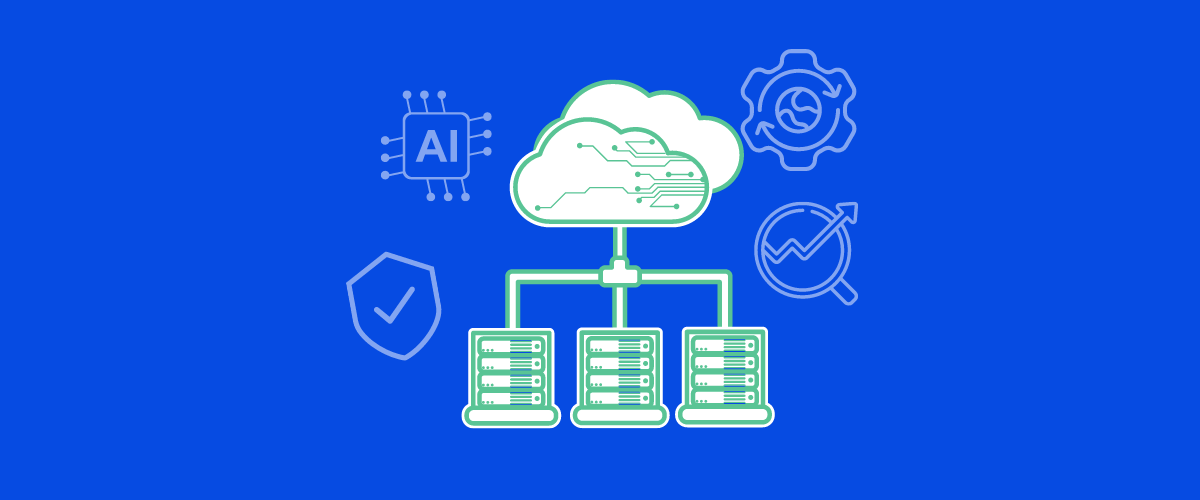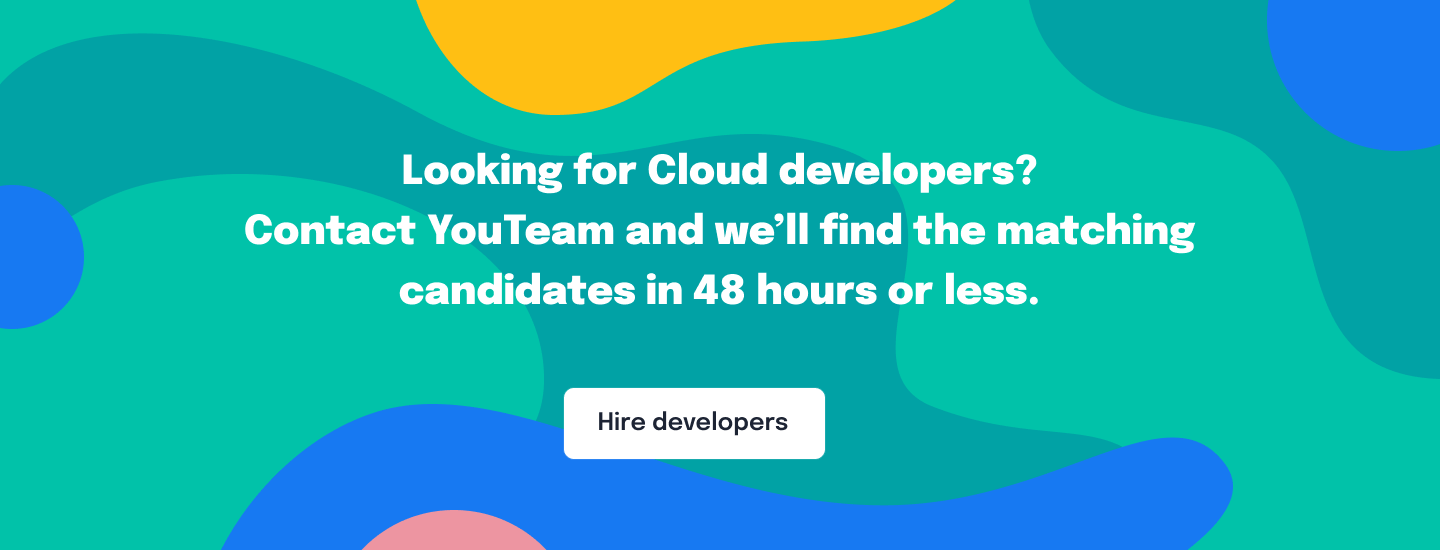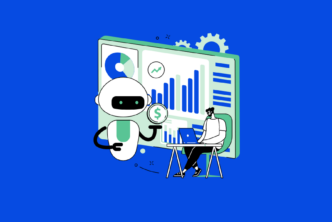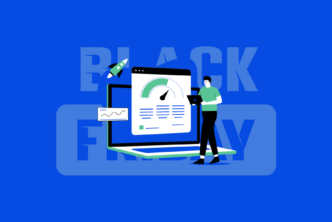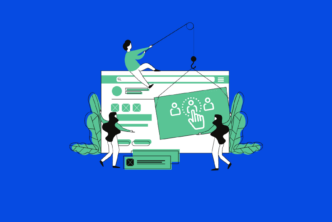Cloud-based computing has been growing rapidly since 2015. From market share to global adoption and innovation, this technology was rising even before COVID-19, but the pandemic pushed this growth to explosive levels.
Due largely to the rise in remote work, the market growth of cloud computing reached 445.3 billion in 2021 and is expected to reach 947.3 billion by 2026. Approximately 50% of all corporate data now resides in the cloud. In this article, you will learn about the latest developments in cloud technology as well as how to use these trends to grow your business. After learning about the technological advancements listed below, businesses will be able to find new tools that will help streamline communication, improve productivity, broaden outreach, enhance the customer experience, and increase security.
The Evolution of Cloud Computing
While cloud computing has risen drastically in the last two years, it has also evolved and changed to meet the demands of our rapidly changing society. Because this technology can be used in many ways, we see exciting innovations by many companies as they transition to the cloud.
For example, Pearson, a textbook and education company, recently invested in and leveraged the cloud to transform the way they serve customers. With an increasing number of web-oriented courses and digital resources, Pearson customers can now not only take a course online but also measure their growth easily. With cloud technology managing its data, Pearson customers can have 24/7 access to the tools and resources they need to succeed.
The world’s largest Coca-Cola bottler, CCEP, recently transformed operations with the help of cloud computing. During its cloud migration, one-third of CCEP’s enterprise workloads were moved to the cloud. This allowed the company greater flexibility and IT resiliency at a time when online orders were at an all-time high. Cloud-based technology now provides CCEP with a platform for data to apply analytics, IoT, and AI technologies. This leads to new insights and increased efficiency across operations, such as call center technology.
The focus of cloud computing is no longer on fixing a specific problem or improving a particular business function. Instead, it has become more of a driving force within a business that should be integrated in a holistic way.
Biggest Cloud Computing Trends in 2024
Further Integration of AI and Machine Learning
Cloud computing works symbiotically with AI and Machine Learning to help businesses in countless ways. There are so many possibilities and opportunities for innovation with these technologies that it is hard to even imagine what cloud-based companies will look like in a few years.
While the cloud provides large amounts of data to power AI, Artificial Intelligence is able to manage and analyze company data leading to improvements in operations, customer engagement, and service.
For example, 20th Century Studios has utilized Google cloud-based solutions along with Google AI capabilities to align films and audiences better. AI can conduct multiple parallel tests across millions of individuals. When given access to the large amount of data collected and managed by the cloud, 20th Century Studios was able to gain incredibly detailed insight into who would watch certain films, who wouldn’t, and even who would become a “core fan”.
These insights allowed 20th Century Studios to adapt their marketing campaigns as well as the types of films they were creating.
Multi-cloud, Hybrid cloud, Distributed cloud
Although the private cloud was once a popular option for large enterprises due to high security and customizability, there are flexibility, scalability, and latency issues. Multi-cloud, Hybrid cloud, and Distributed cloud all offer businesses the opportunity to get the best of both worlds.
Multi-cloud allows users to utilize several public and private clouds to tailor a solution that meets the company’s bespoke requirements. Multi-cloud is currently the most popular option for enterprises. Hybrid cloud is similar to multi-cloud—it allows a company to use a public cloud for work that needs to be changed or manipulated and a private cloud for work that doesn’t need to be accessed often and requires stringent security. 87% of enterprises have already adopted hybrid cloud strategies, and that number is growing.
Distributed cloud is the newest option, and it allows a cloud provider to distribute hybrid clouds to a broader geographic area. This gives cloud customers the ability to leverage more servers that are closer in location to them, resulting in faster service and less latency. Distributed cloud will also likely make cloud migration more affordable for smaller businesses who may be able to avail themselves of a closer distributed location without having to pay the server prices.
Serverless Computing
Serverless computing allows organizations to scale quickly and only pay for usage. This is a clear benefit to SMEs, and the demand for serverless computing has been growing. From 2021 to 2026, the Serverless Computing Market is expected to maintain a CAGR of over 23.17%.
Another benefit of serverless computing is it provides a sandbox for companies to implement their own code. For SMEs needing room to experiment and figure out what works, serverless computing gives them the opportunity to try out new code without the risk of back-end failure.
In the current market, startups need to grow rapidly and deliver advanced features and products quickly to survive amongst the competition. Serverless computing can drive such growth by eliminating the need to manage servers, data, and logic applications, scaling automatically, and eliminating many initial set-up costs.
Edge Computing
Edge computing is a little like a distributed cloud in that it brings localized data centers to where they are needed (close to organizations). It relieves much of the pressure on central servers, which means fewer issues with latency and bandwidth congestion.
Issues of latency, bandwidth, and security will only increase in the coming years. AI and robotics require much more processing power and greater speed than other work applications. Additionally, there are over 100 new IoT devices connecting to the Internet every day.
Edge computing has been on the rise, and it will be even more necessary as businesses become more reliant on the cloud. This technology also offers better security because computing and management are handled locally.
Workstation-as-a-Service (WaaS)
Workstation as a Service is the perfect solution for companies transitioning from a physical office to a remote workforce. WaaS is an all-in-one solution that allows employees access to their work at any time and from any device.
WaaS allows organizations to make the transition to remote work quickly and painlessly. It also allows employees more freedom to work from wherever they want.
Remote work rose steadily before the pandemic and then exploded during the pandemic. It is undoubtedly here to stay, but many organizations that had to rely on a quick fix to get through the pandemic will likely be looking for more stable solutions such as WaaS.
Cloud Collaboration
With the rise in remote work and global workforces, there will also be a rise in the need for cloud collaboration. Cloud collaboration allows team members to be anywhere in the world and still easily communicate with one another, assign tasks, share files and get real-time updates on projects.
Cloud collaboration solutions provide many other helpful features for remote workers, such as centralized file storage, version control of documents, and custom permission settings. As a result, there will undoubtedly be more innovation and growth in the cloud collaboration space in the coming years.
More Automation
As the IT needs of organizations become more extensive and more complex, the demand for automation increases. Managing big data, customer self-service, and workflows in real-time have become a top priority for cloud-based and hybrid businesses. Fortunately, when it comes to automation, there have been many recent advances in technology.
Most notable is the rise of the Service Orchestration and Automation Platform (SOAP). SOAPs cater specifically to hybrid IT environments. SOAPs can execute and interpret sequences built across environments, including private cloud, public cloud, and on-premise. Whether you need to automate workflows, self-service, resource provisioning, scheduling, or data, you can use a SOAP. Because SOAPs work seamlessly across environments, real-time on-premise events can trigger automation in the cloud.
Better Security
Security has been one of the biggest concerns for companies as they shift from on-premise to the cloud. Security breaches can cost companies millions and damage a reputation for years. One of the biggest culprits of security breaches is a misconfiguration.
Creating IT environments that are as secure as possible requires integrating strong security measures into every aspect of development from the beginning. DevSecOps is all about this. DevSecOps incorporates security into every aspect of DevOps so that security protocols are present for every step of the process.
Utilizing automated vulnerability scanning, immutable infrastructure, and runtime protection, DevSecOps strengthens the partnership between security and engineering teams to diminish the likelihood of a breach greatly.
Cloud-Native Applications
Gartner predicts that by 2025, cloud-native applications will provide a foundation for over 95% of digital innovation. It’s easy to see why. Cloud-native apps make use of the cloud’s biggest strengths to provide greater speed, agility, and flexibility.
To keep up with growing demand, the challenges of cloud-native apps will need to be addressed. Many businesses will opt to use cloud-native applications in edge computing, one of the fastest-growing forms of cloud computing. Edge computing offers more flexibility but lacks standardization of software and hardware. For example, Google, Amazon, and Apple all have their own standards and aren’t compatible with one another.In addition, you can read more on Design Rush about Amazon cloud computing services.
This is an issue for cloud-native applications because they are open source and therefore require standardization. Developments in edge software, API and edge hardware standardization are likely to be a growing trend in the next few years.
More Focus on Sustainability
It is no secret that brands investing in sustainability gain a considerable advantage over those that don’t. The effects of climate change, pollution, and overpopulation are coming to a turning point and are more visible than ever. Sustainability is at the top of mind for most people and their purchasing behaviors reflect this.
According to one study, 47% of consumers had already stopped using products and services from businesses that violated their morals. In 2020, 80% of consumers stated that sustainability was a consideration when choosing between companies.
Cloud computing offers a number of environmental benefits. The main one is, of course, severely decreased energy consumption. When a business transitions common software applications and data to the cloud, it can reduce energy usage by 31% to 90%, depending on how efficient the business was running before. This results in much lower energy costs as well as a smaller carbon footprint.
Key Takeaways
There are many new opportunities to save costs, innovate, improve customer service and increase business using cloud computing. Before choosing a provider or solution, it is essential to figure out the “must-have” cloud tools for your business. From Public Cloud to Distributed Cloud to Serverless, there are endless ways to migrate to the cloud, and there is no “one-size-fits-all” solution. It is important to focus on your business as a whole so that cloud migration can be enterprise-wide.

